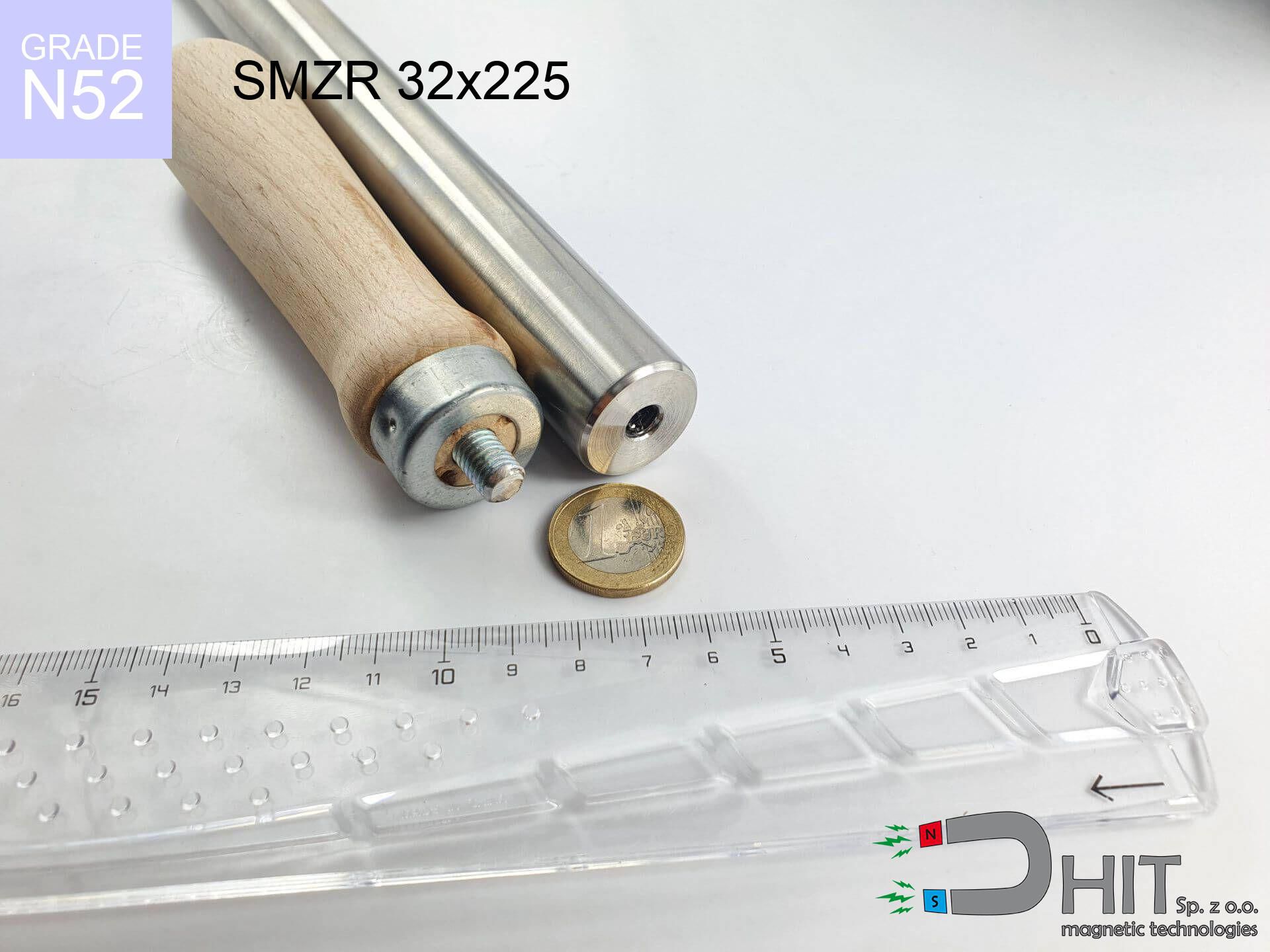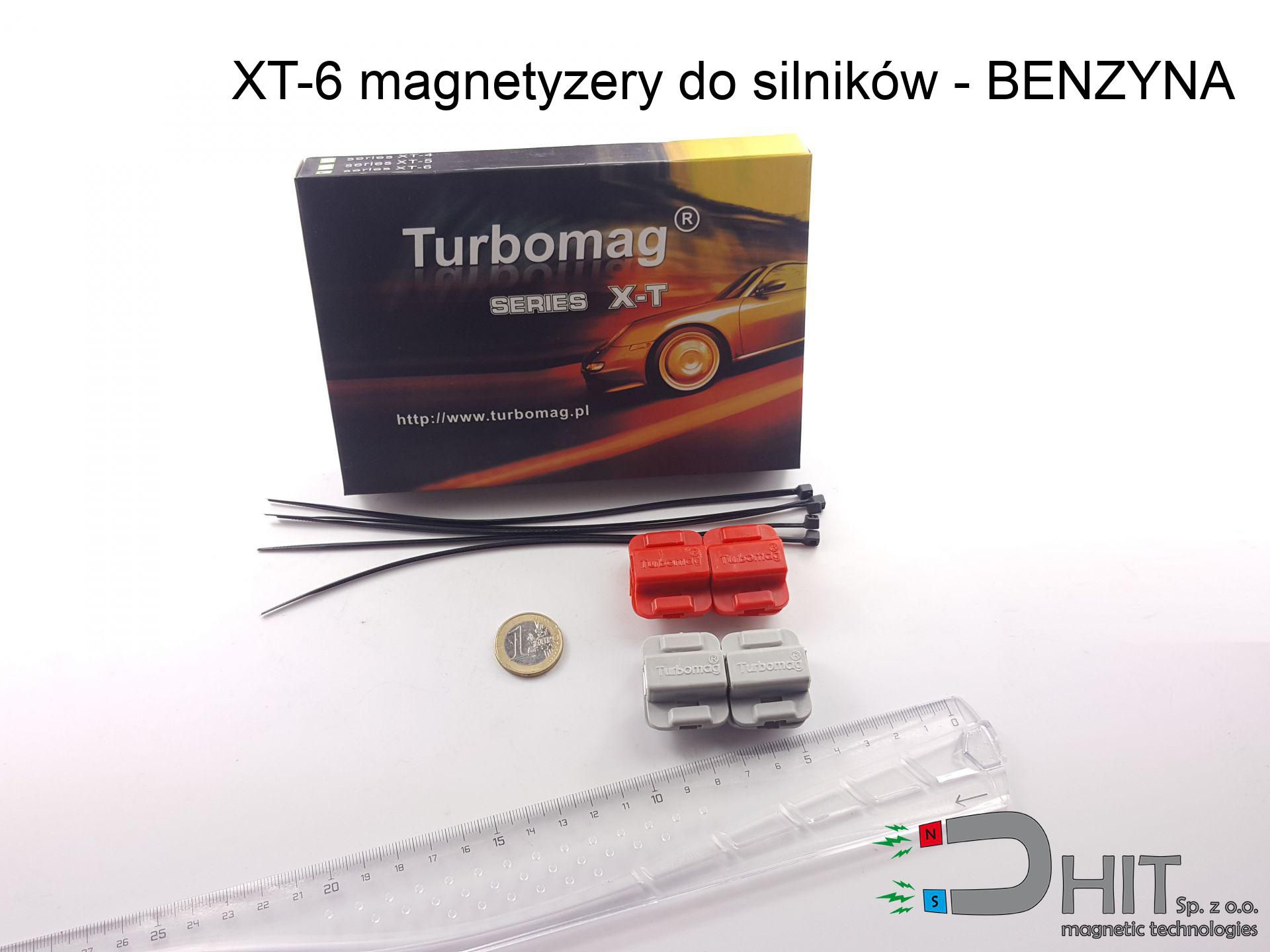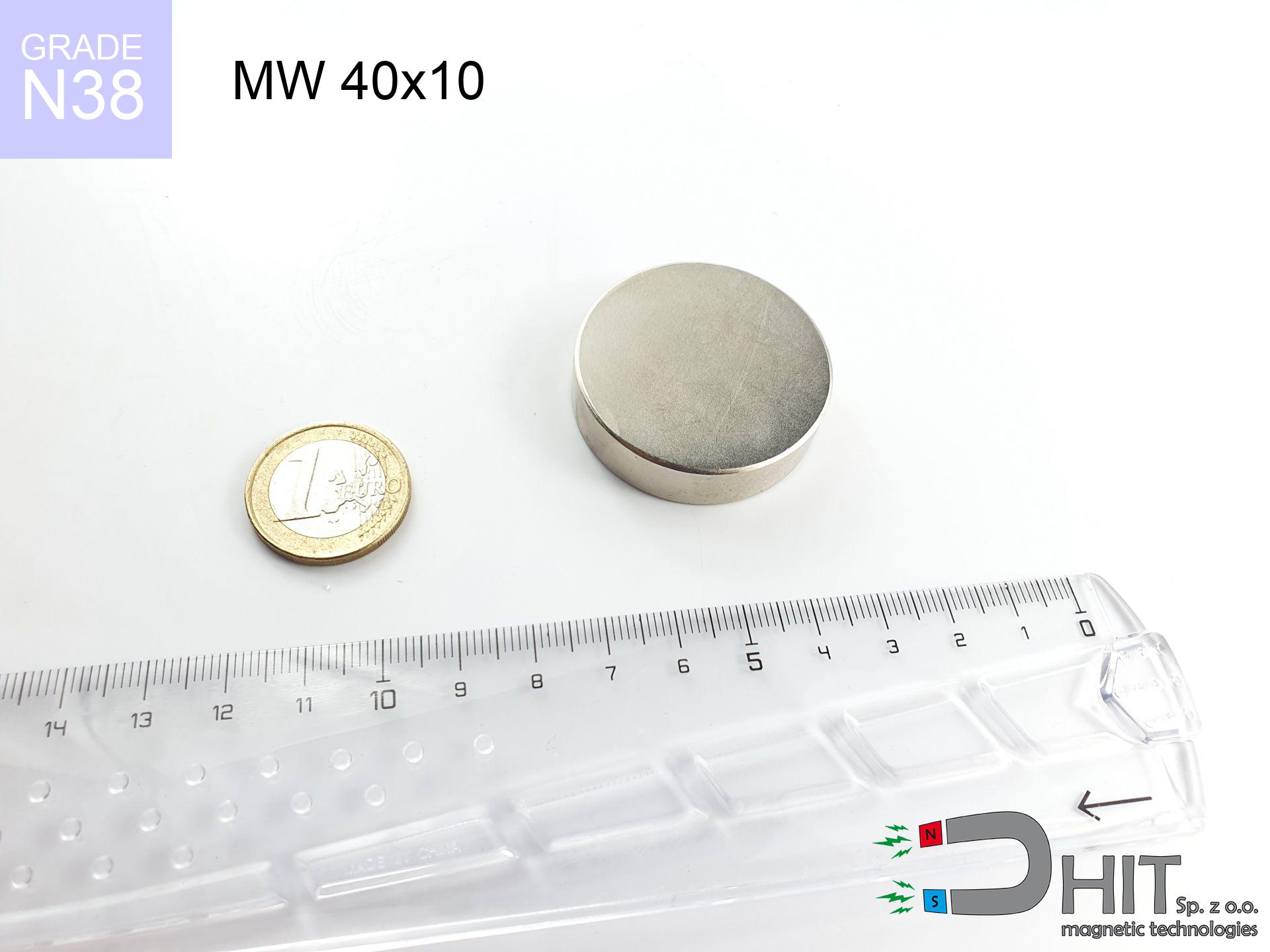SMZR 32x225 / N52 - magnetic roller
magnetic separator with handle
catalog number 140468
GTIN: 5906301813521
diameter Ø
32
mm [±0,1 mm]
height
225
mm [±0,1 mm]
max. temperature
≤ 80
°C
catalog number 140468
GTIN: 5906301813521
diameter Ø
32 mm [±0,1 mm]
height
225 mm [±0,1 mm]
max. temperature
≤ 80 °C
676.50 ZŁ gross price (including VAT) / pcs +
550.00 ZŁ net price + 23% VAT / pcs
bulk discounts:
need more quantity?Want to bargain?
Give us a call tel: +48 22 499 98 98 or write via contact form on our website. You can check the mass and the shape of magnet in our force calculator force calculator
Orders placed by 2:00 PM will be shipped on the same business day.
Specification: magnetic separator with handle 32x225 / N52
Magnetic properties of the material N52
Physical properties of sintered neodymium magnets Nd2Fe14B
Product suggestions
Advantages and disadvantages of neodymium magnets NdFeB.
Apart from immense power, neodymium magnets have the following advantages:
- They do not lose strength over time. After approximately 10 years, their strength decreases by only ~1% (theoretically),
- They are exceptionally resistant to demagnetization caused by an external magnetic field,
- By applying a shiny coating of nickel, gold, or silver, the element gains an aesthetic appearance,
- They possess very high magnetic induction on the surface of the magnet,
- By using an appropriate combination of materials, they can achieve high thermal resistance, allowing them to operate at temperatures up to 230°C and above...
- Due to the option of accurate forming and adaptation to individual needs – neodymium magnets can be produced in many variants of shapes and sizes, which amplifies their universality in usage.
- Wide application in the industry of new technologies – find application in computer drives, electric drive mechanisms, medical apparatus and other highly developed apparatuses.
Disadvantages of neodymium magnets:
- They can break as they are fragile when subjected to a powerful impact. If the magnets are exposed to impacts, it is suggested using magnets in a steel housing. The steel housing in the form of a holder protects the magnet from impacts and simultaneously increases its overall strength,
- They lose strength at high temperatures. Most neodymium magnets experience permanent loss of strength when heated above 80°C (depending on the shape and height). However, we also offer special magnets with high temperature resistance, up to 230°C,
- They rust in a humid environment. For outdoor use, we recommend using waterproof magnets, such as those made of rubber or plastic,
- Limited ability to create threads or complex shapes in the magnet - the use of a housing is recommended - magnetic holder
- Possible danger associated with microscopic parts of magnets can be dangerous, in case of ingestion, which is particularly important in the aspect of protecting young children. Furthermore, miniscule components of these devices can hinder the diagnostic process after entering the body.
Handle Neodymium Magnets Carefully
Neodymium magnets can attract to each other due to their immense internal force, causing the skin and other body parts to get pinched and resulting in significant swellings.
Magnets will attract each other within a distance of several to about 10 cm from each other. Don't put your fingers in the path of magnet attraction, as a significant injury may occur. Magnets, depending on their size, can even cut off a finger or there can be a serious pressure or even a fracture.
Keep neodymium magnets away from GPS and smartphones.
Intense magnetic fields generated by neodymium magnets interfere with compasses and magnetometers used in navigation, as well as internal compasses of smartphones and GPS devices.
You should maintain neodymium magnets at a safe distance from the wallet, computer, and TV.
Strong fields generated by neodymium magnets can damage magnetic storage media such as floppy disks, credit cards, magnetic ID cards, cassette tapes, video tapes, or other similar devices. In addition, they can damage televisions, VCRs, computer monitors, and CRT displays. You should especially avoid placing neodymium magnets near electronic devices.
Neodymium magnets can demagnetize at high temperatures.
Despite the fact that magnets have been observed to maintain their efficacy up to temperatures of 80°C or 175°F, it's essential to consider that this threshold may fluctuate depending on the magnet's type, configuration, and intended usage.
Dust and powder from neodymium magnets are flammable.
Avoid drilling or mechanical processing of neodymium magnets. Once crushed into fine powder or dust, this material becomes highly flammable.
Keep neodymium magnets far from youngest children.
Not all neodymium magnets are toys, so do not let children play with them. In the case of small magnets, they can be swallowed and cause choking. In such cases, the only solution is to undergo surgery to remove the magnets, and otherwise, it can even lead to death.
The magnet is coated with nickel. Therefore, exercise caution if you have an allergy.
Studies clearly indicate a small percentage of people who suffer from metal allergies such as nickel. An allergic reaction often manifests as skin redness and rash. If you have a nickel allergy, try wearing gloves or avoid direct contact with nickel-plated neodymium magnets.
Neodymium magnets are particularly fragile, resulting in shattering.
Neodymium magnetic are extremely fragile, and by joining them in an uncontrolled manner, they will crumble. Neodymium magnets are made of metal and coated with a shiny nickel surface, but they are not as hard as steel. At the moment of collision between the magnets, sharp metal fragments can be dispersed in different directions.
Neodymium magnets are not recommended for people with pacemakers.
In the case of neodymium magnets, there is a strong magnetic field. As a result, it interferes with the operation of a heart pacemaker. However, if the magnetic field does not affect the device, it can damage its components or deactivate the device when it is in a magnetic field.
Neodymium magnets are among the strongest magnets on Earth. The surprising force they generate between each other can surprise you.
On our website, you can find information on how to use neodymium magnets. This will help you avoid injuries and prevent damage to the magnets.
To illustrate why neodymium magnets are so dangerous, see the article - How dangerous are very powerful neodymium magnets?.


![magnetic accessories ucho [M10] magnetic accessories ucho [M10]](https://cdn3.dhit.pl/graphics/products/am-ucho-m10-tij.jpg)

![magnetic separator 32x275 [2xM8] / N52 magnetic separator 32x275 [2xM8] / N52](https://cdn3.dhit.pl/graphics/products/sm-32x275-2xm8-get.jpg)


